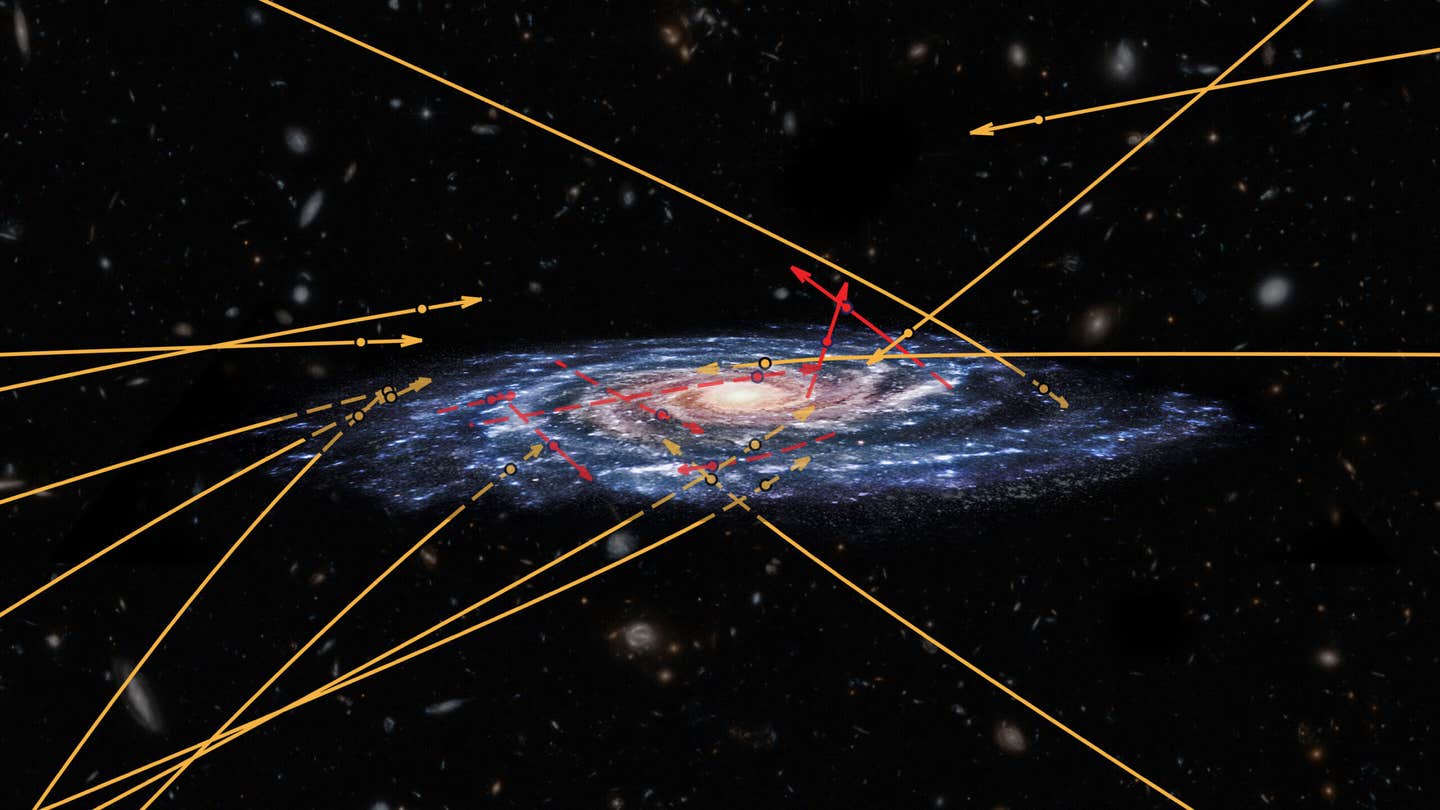Dark dwarf stars lurking at the center of our galaxy could reveal the true nature of dark matter
New research reveals dark dwarfs, luminous objects powered by dark matter, could revolutionize our understanding of the cosmos.

Scientists propose dark dwarfs, objects heated by dark matter annihilation, as a novel way to study the elusive nature of dark matter. Artistic representation of a dark dwarf. (CREDIT: Sissa Medialab)
Dark matter remains one of science's deepest mysteries. It makes up about 25% of our universe, yet scientists only observe its gravitational effects. Although invisible, researchers continue searching for direct evidence to explain what dark matter truly is.
Recent research led by Jeremy Sakstein, a physicist at the University of Hawai‘i, presents a compelling new way dark matter may reveal itself—through unusual celestial objects named dark dwarfs.
How Dark Dwarfs Could Change Our Understanding
Current astrophysics predicts that stars burn hydrogen to produce heat and light. This process, known as nuclear fusion, occurs because a star's gravity compresses its core, causing atomic nuclei to fuse. Smaller objects, known as brown dwarfs, do not have enough mass—less than 8% of our Sun's—to trigger fusion and instead slowly cool over time.
Yet, Sakstein’s team suggests something radically different occurs when these small bodies interact with dark matter.
According to their findings, published recently in the Journal of Cosmology and Astroparticle Physics, dark matter annihilation can provide enough heat to stabilize objects otherwise too small to sustain fusion. These objects, called dark dwarfs, would no longer cool and shrink but remain stable and luminous, powered predominantly by dark matter.
The idea hinges on a particular type of dark matter called Weakly Interacting Massive Particles (WIMPs). Unlike other dark matter candidates, WIMPs are massive particles interacting very weakly with ordinary matter, barely noticeable except through gravitational effects. These WIMPs, however, can interact and annihilate each other, releasing energy.
Sakstein explains clearly: "Dark matter interacts gravitationally, so it could be captured by stars and accumulate inside them. If that happens, it might also interact with itself and annihilate, releasing energy that heats the star."
Related Stories
New Evidence in Unexpected Places
Sakstein's team focused on objects at the boundary between stars and planets. Typical stars, including our Sun, rely on nuclear reactions. Objects with masses around 7.5% of the Sun’s, called red dwarfs, achieve stable fusion. Those below that threshold become brown dwarfs and continually cool. But the researchers found that with dark matter present, objects as small as brown dwarfs could reach equilibrium and stop shrinking.
Interestingly, these dark dwarfs would retain significant amounts of lithium-7, a key marker. Ordinary stars quickly burn through lithium-7, but dark dwarfs, despite their mass, preserve it. Sakstein emphasizes, "There were a few markers, but we suggested lithium-7 because it would really be a unique effect."
Thus, finding lithium-rich, luminous objects in regions dense with dark matter, such as the Milky Way's center, could strongly indicate dark dwarfs exist.
Where to Find Dark Dwarfs
Identifying dark dwarfs requires looking in the right places. Sakstein's research predicts these objects likely exist near galactic centers where dark matter is abundant, estimating densities of over 1,000 GeV per cubic centimeter. Elsewhere, dark matter densities remain too low, preventing dark dwarfs from forming quickly enough.
As of now, no black dwarfs have been directly observed. The process could take longer than the current age of the universe, which is about 13.8 billion years. However, several well-known white dwarfs are expected to eventually become black dwarfs.
One of the most famous is Sirius B, a white dwarf companion to Sirius A, the brightest star in the night sky. Located just 8.6 light-years from Earth in the constellation Canis Major, Sirius B is a dense, Earth-sized stellar core that will take trillions of years to fade completely into darkness.
Another notable example is Procyon B, the white dwarf companion to Procyon A, found about 11.5 light-years away in the constellation Canis Minor. Like Sirius B, it will eventually cool into a black dwarf given enough time.
The James Webb Space Telescope and similar advanced observatories might eventually be able to detect dark dwarfs. Sakstein also suggests analyzing populations of objects statistically. By examining many stars or brown dwarfs, astronomers could identify groups better explained as dark dwarfs rather than standard objects.
Significance for Dark Matter Research
Finding dark dwarfs would be groundbreaking. Though it wouldn't conclusively prove dark matter is a WIMP, it would narrow down possibilities significantly. "Reasonably strong," says Sakstein about potential evidence. "With light dark matter candidates, something like an axion, I don’t think you’d be able to get something like a dark dwarf."
WIMPs, being massive and capable of self-annihilation, uniquely fit this scenario. Discovering dark dwarfs would strongly support theories involving heavy dark matter particles interacting weakly with ordinary matter but strongly with each other. This would greatly influence our understanding of particle physics and cosmology.
The Future of Dark Matter Astronomy
Dark dwarfs might soon become key to solving the puzzle of dark matter. Scientists previously relied on indirect methods, observing gravitational effects on galaxies or scattering signals in laboratory experiments. Dark dwarfs offer a tangible, observable marker, bridging astrophysics and particle physics. Sakstein remains optimistic: "If we manage to find a dark dwarf, it would provide compelling evidence that dark matter is heavy, interacts strongly with itself, but only weakly with the Standard Model."
As new telescopes scan the cosmos, astronomers hope to confirm this revolutionary hypothesis. Identifying even a single dark dwarf could provide critical insight into dark matter's true nature, bringing science closer to solving a mystery that's captivated minds for decades.
Note: The article above provided above by The Brighter Side of News.
Like these kind of feel good stories? Get The Brighter Side of News' newsletter.



